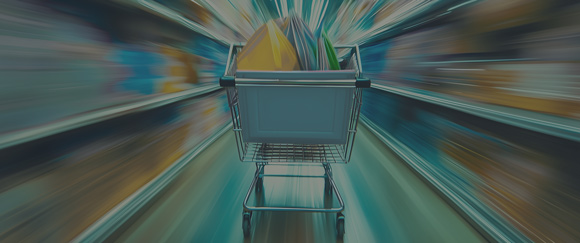As we move through a challenging economic landscape, consumers still feel the impact of higher food prices. However, there are good reasons to be hopeful. At Groceryshop 2024, panelists and speakers shared their optimism about the industry’s potential to navigate any obstacles and deliver a more personal, transparent, and seamless shopping experience across all channels.
The drive to increase consumer satisfaction and loyalty is, for example, powering the push toward unified commerce. Companies are seeking ways to integrate sales data, consumer loyalty information, and more into one consolidated platform. This approach will deliver benefits to shoppers by delivering the fully connected shopping experience they’ve been waiting for, while also helping CPGs and retailers enhance their operations and become more efficient.
Unified commerce was a major theme throughout the conference, but it wasn’t the only hot topic of conversation. In this blog, we will round up the key takeaways from the conference in Las Vegas.
1. Unified commerce emerges as a leading goal of retailers
Groceryshop attendees and speakers agree that the physical store remains the hub of the shopping experience, but there is an opportunity to infuse the digital experience both inside and outside the store.
Chris Nicholas, president and CEO of Sam’s Club, spoke during the conference about the importance of a connected commerce platform, and how AI and advanced analytics are helping to control inventory and transform the economics of retail. Having technology in place that supports a holistic retail strategy provides the company fidelity and truth rather than the more amorphous “what we own and where it is,” Nicholas said.
He cited the chain’s Grapevine, Texas location, which is 100% digitally enabled. There are no checkout lanes, and every shopper uses scan-and-go technology. In the area of the store where checkout lanes once sat now sits a “dance floor,” as the company’s team refers to it, where shoppers can scan and buy a range of online-only items.
Computer vision technology assists store associates with on-shelf inventory audits and the scan-and-go technology delivers personalized offers to shoppers. All the collected data helps the retailer understand its shoppers better, building a complete digital ecosystem.
Throughout the conference, there were explorations about the key steps to achieving unified commerce, such as:
- Implementing composable platforms and ERPs (enterprise resource planning) platforms
- Leveraging AI-powered platforms focused on grocery needs such as forecasting, replenishment, promotions, assortments, and space planning
- Ensuring data is connected, accessible, and actionable by each critical function inside a brand or retailer organization
- Automating tasks through AI and ML capabilities to embed insights in operational workflows to drive improved results
- Partnering with retail system integrators that provide expertise in unifying retail point-solution technologies
2. Retailers are leveraging demand forecasting, planning tools to reduce food waste
Another urgent topic at Groceryshop was food waste. Coresight Research presented on the topic, saying by the end of 2024, total retail food waste in the U.S. will reach $750 billion worth of food. The analysts discussed how AI-powered solutions can optimize inventory planning, demand forecasting, and dynamic pricing, which can greatly help reduce food waste. For example:
- Retailers can forecast product demand at each store location to manage inventory plans and even shipping routes to get products to stores in the most efficient way possible.
- Suppliers that collaborate directly with retailers can set dynamic pricing of items so that products that are nearing spoilage can move off shelves quicker.
- Supply chain teams can use AI to manage inventory and space planning to minimize spoilage and maximize freshness for each store location.
For obvious financial reasons, retailers and suppliers always want to get more efficient in how fresh foods are managed throughout the supply chain. However, consumers are also calling for change, with three-quarters of Gen Z shoppers saying food waste is an essential part of sustainability initiatives, according to research from Whole Foods Market.
During their presentation, analysts from Circana and NIQ described how consumers are buying more fresh foods in an effort to eat healthier and save money. Younger consumers in particular are showing a clear inclination to eating out less and making quick-and-easy meals at home. To address these evolving consumer habits, retailers must implement fully connected supply chains and store operations platforms to maximize prepared food offerings and easy-to-make fresh meals.
3. Loyalty programs benefit from AI-powered personalization
In the face of low consumer confidence, retailers and brands at Groceryshop recognized the importance of collaborating on promotions and tactics to earn and maintain consumer loyalty. Specifically, organizations see promise in offering personalized offers and rewards.
By having a unified commerce platform in place, brands and retailers can uplevel how they collaborate on and customize promotions. For example: if a company has data flowing to one single source of truth (including POS data, pricing, promotions, and loyalty data), its marketing and merchandising teams can readily leverage AI to recommend and automate personalized offers and rewards to shoppers at scale. Advanced analytics reviews each shopper’s loyalty behavior to find offers that meet their desires.
At the same time, having a unified promotions engine in place is mandatory to drive loyalty. The solution streamlines online and in-store offers so consumers see the most up-to-date offers available in real time.
Helping grocers meet the future of retail
With another Groceryshop event in the books, retailers & CPGs can take the learnings and gear up for 2025. Going forward, comparatively high prices and inflation will continue to be an area of concern for consumers, as companies strive to build up trust and confidence, but value is defined in different ways.
Logic, Part of Accenture helps companies unlock the most pertinent ways they bring value to their consumers. Perhaps it’s implementing a unified commerce solution that serves up accurate pricing and promotions, no matter where and how a consumer shops. Maybe it’s exploring AI-powered tools that help retailers work with suppliers to run a more efficient supply chain to reduce food waste.






